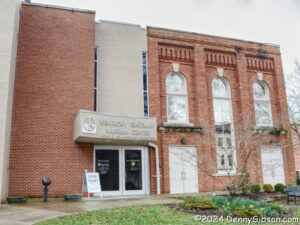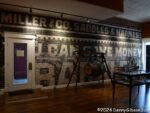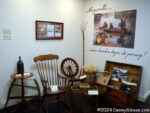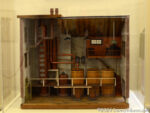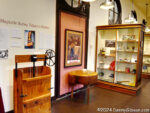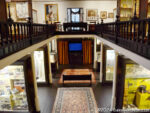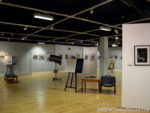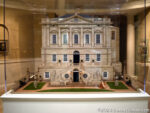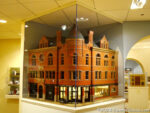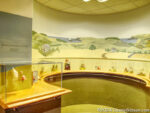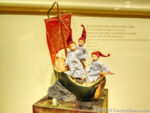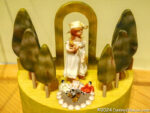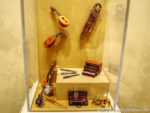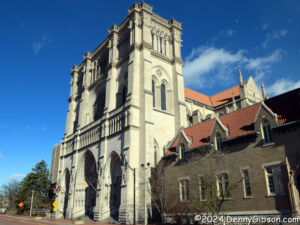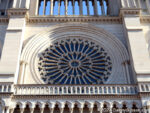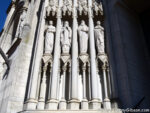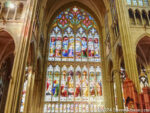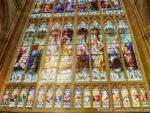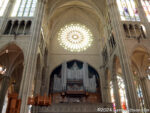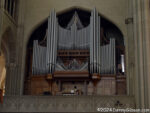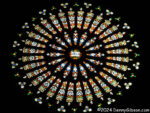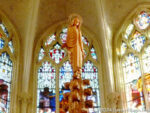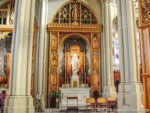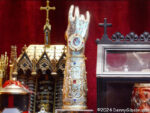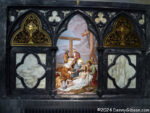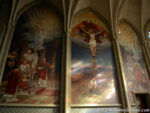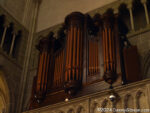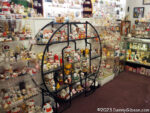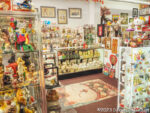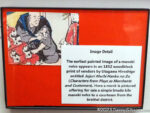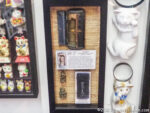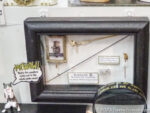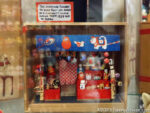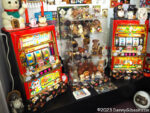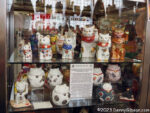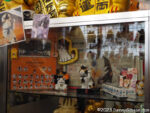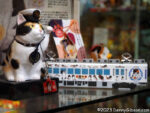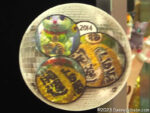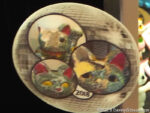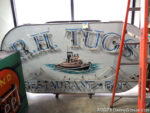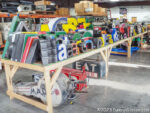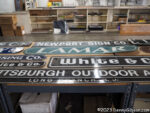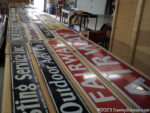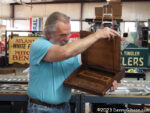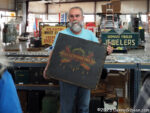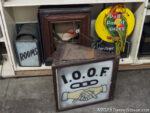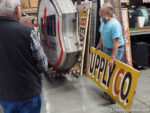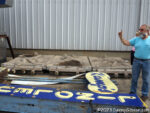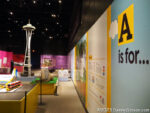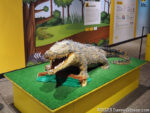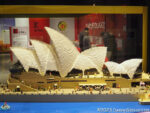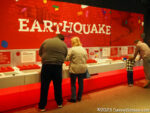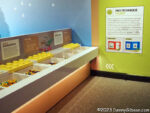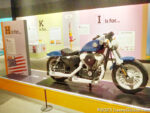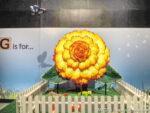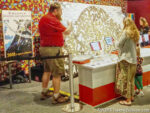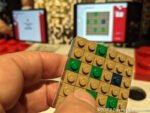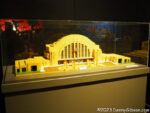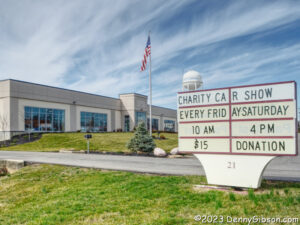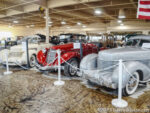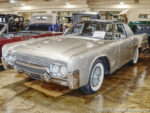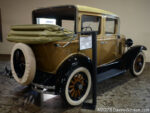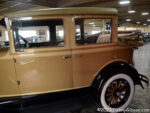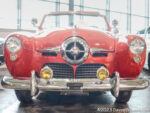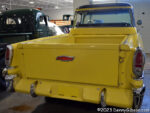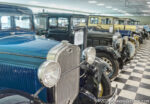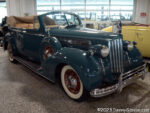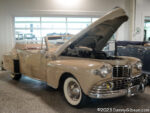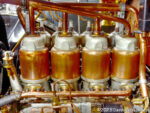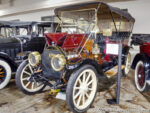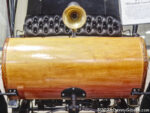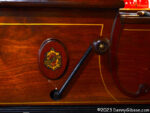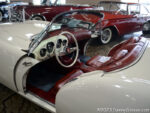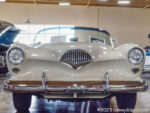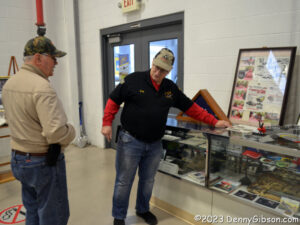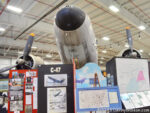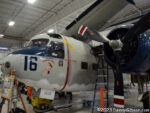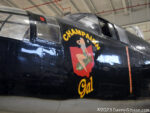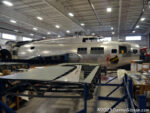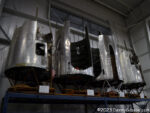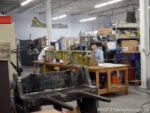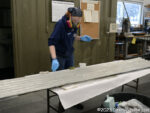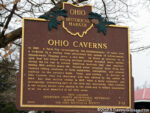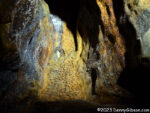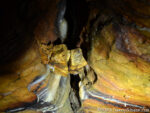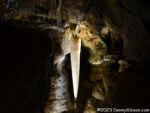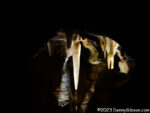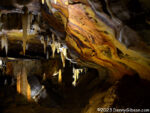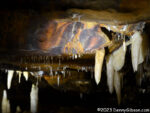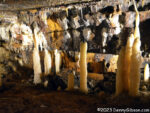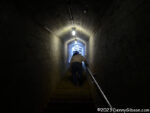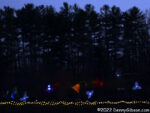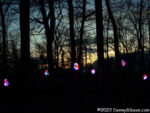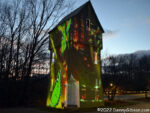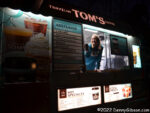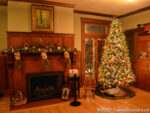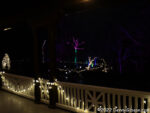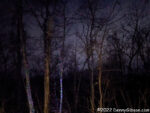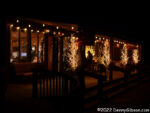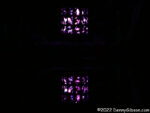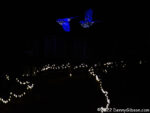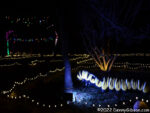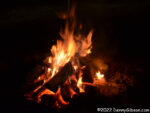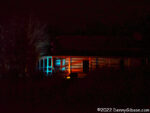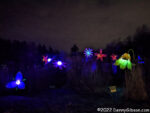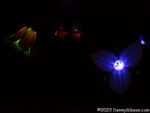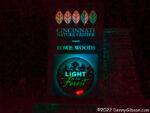 Just a day shy of two years ago, I attended an open house at Vent Haven in Fort Mitchell, KY. My report on that visit is here. There would be just two more open house events before “the world’s only museum dedicated to ventriloquism” closed for a major expansion in September 2021. When I wrote about the open house, I was surprised and somewhat embarrassed to see that nearly ten years had passed since my one and only previous visit. I resolved to do better and have succeeded in returning almost as quickly as possible. There was a big invitation-only Grand Re-Opening on Saturday, tours for the general public resumed on Tuesday, and I joined the first tour of the day on Wednesday.
Just a day shy of two years ago, I attended an open house at Vent Haven in Fort Mitchell, KY. My report on that visit is here. There would be just two more open house events before “the world’s only museum dedicated to ventriloquism” closed for a major expansion in September 2021. When I wrote about the open house, I was surprised and somewhat embarrassed to see that nearly ten years had passed since my one and only previous visit. I resolved to do better and have succeeded in returning almost as quickly as possible. There was a big invitation-only Grand Re-Opening on Saturday, tours for the general public resumed on Tuesday, and I joined the first tour of the day on Wednesday.
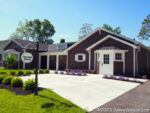 This picture of the new building sort of shouts out how one of the museum’s old shortcomings has been overcome in a big way. Previously, very little of the museum was truly handicapped-accessible. Now, not only are the museum’s exhibits accessible with wider doors, no steps, and space for wheelchairs, there is handicapped parking right at the front door. Not only that, non-handicapped patrons no longer have to seek an open spot on the street but can pull into the convenient lot in the back. Another change of at least equal magnitude is the absence of the “go before you get here” warning that used to be given to everyone registering for a tour. Inside that door is a lobby, gift shop, and PUBLIC RESTROOM.
This picture of the new building sort of shouts out how one of the museum’s old shortcomings has been overcome in a big way. Previously, very little of the museum was truly handicapped-accessible. Now, not only are the museum’s exhibits accessible with wider doors, no steps, and space for wheelchairs, there is handicapped parking right at the front door. Not only that, non-handicapped patrons no longer have to seek an open spot on the street but can pull into the convenient lot in the back. Another change of at least equal magnitude is the absence of the “go before you get here” warning that used to be given to everyone registering for a tour. Inside that door is a lobby, gift shop, and PUBLIC RESTROOM.
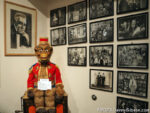
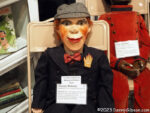 A couple of figures near the start of the tour were familiar to me. Tommy Baloney was the first dummy museum founder W. S. Berger ever owned. He was purchased in 1910. The McElroy Brothers made Jocko for Mr. Berger around 1940.
A couple of figures near the start of the tour were familiar to me. Tommy Baloney was the first dummy museum founder W. S. Berger ever owned. He was purchased in 1910. The McElroy Brothers made Jocko for Mr. Berger around 1940.
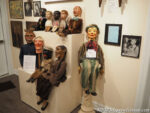

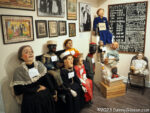 Museum exhibits are not, in general, organized by age but it is a fact that some of the oldest dummies on display are among those encountered early in the tour. These are from the Vaudeville period (1880s-1920s) when figures and jokes based on racial and ethnic stereotypes were not uncommon.
Museum exhibits are not, in general, organized by age but it is a fact that some of the oldest dummies on display are among those encountered early in the tour. These are from the Vaudeville period (1880s-1920s) when figures and jokes based on racial and ethnic stereotypes were not uncommon.
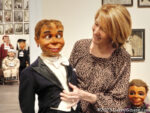 Cecil Wigglenose is another museum resident that I recognized. In addition to a wiggling nose, he has eyes, ears, a tongue, and hair that a ventriloquist can manipulate as demonstrated by curator and tour guide Lisa Sweasy. Lisa has been involved in the museum since 2000; first as curator, then as a Board of Directors member, then as both. I met Lisa at that 2021 open house but there were no tours that day. My earlier visit had been during those few years she stepped away from the curator role so today was the first I got to benefit from her knowledge. That knowledge is not just of the items in the collection but of the whole broad world of ventriloquism past and present. It’s pretty obvious she loves her job. I don’t think it is possible to get this good at something otherwise.
Cecil Wigglenose is another museum resident that I recognized. In addition to a wiggling nose, he has eyes, ears, a tongue, and hair that a ventriloquist can manipulate as demonstrated by curator and tour guide Lisa Sweasy. Lisa has been involved in the museum since 2000; first as curator, then as a Board of Directors member, then as both. I met Lisa at that 2021 open house but there were no tours that day. My earlier visit had been during those few years she stepped away from the curator role so today was the first I got to benefit from her knowledge. That knowledge is not just of the items in the collection but of the whole broad world of ventriloquism past and present. It’s pretty obvious she loves her job. I don’t think it is possible to get this good at something otherwise.
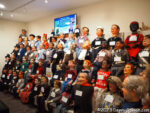 This is the second exhibit room. The next room has even more dummies (100+) in shoulder-to-shoulder rows. But both rooms have a fair amount of open space plus the room that precedes them on the tour is not densely populated at all. That’s not the way it used to be. Spaces in the old museum were smaller, more densely packed, and entered directly from the outside. In 2011, I described my first step into the museum as feeling like I was “late to a meeting where a crowd had already gathered”. That was much less the case today. The “walls of dummies” are good. They help convey the popularity of ventriloquism and the variety of figures used but it is nice to approach them without a jolt. This “wall” is organized by builder with color-coded tags. Esky (the Monopoly-man-looking guy in the opening picture) was made by the McElroy Brothers (yellow bordered tags). He’s near the center of this photo in the second row from the top.
This is the second exhibit room. The next room has even more dummies (100+) in shoulder-to-shoulder rows. But both rooms have a fair amount of open space plus the room that precedes them on the tour is not densely populated at all. That’s not the way it used to be. Spaces in the old museum were smaller, more densely packed, and entered directly from the outside. In 2011, I described my first step into the museum as feeling like I was “late to a meeting where a crowd had already gathered”. That was much less the case today. The “walls of dummies” are good. They help convey the popularity of ventriloquism and the variety of figures used but it is nice to approach them without a jolt. This “wall” is organized by builder with color-coded tags. Esky (the Monopoly-man-looking guy in the opening picture) was made by the McElroy Brothers (yellow bordered tags). He’s near the center of this photo in the second row from the top.

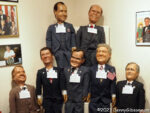 Occasionally a dummy is made to resemble its owner but that old line about “any resemblance to real persons, dead or alive, is purely coincidental” can be applied to the vast majority of them. Notable exceptions at the museum include this group of U.S. presidents and personal favorites Penn and Teller.
Occasionally a dummy is made to resemble its owner but that old line about “any resemblance to real persons, dead or alive, is purely coincidental” can be applied to the vast majority of them. Notable exceptions at the museum include this group of U.S. presidents and personal favorites Penn and Teller.
 Like most museums, Vent Haven has some temporary exhibits although, in light of the recent welcome but exhausting building project, at present “temporary” probably means at least a year and maybe two. One of the current temporary displays features the work of William Kirk Brown who specialized in low-cost entry-level ventriloquial figures.
Like most museums, Vent Haven has some temporary exhibits although, in light of the recent welcome but exhausting building project, at present “temporary” probably means at least a year and maybe two. One of the current temporary displays features the work of William Kirk Brown who specialized in low-cost entry-level ventriloquial figures.
 As might be expected, Vent Haven has displays dedicated to the world’s most famous ventriloquists. Edgar Bergen, Señor Wences, Shari Lewis, Paul Winchell, Jeff Dunham, and others have their own spots. When I was there in 2011, I was able to view but not photograph a temporary display honoring Jimmy Nelson. Jimmy died in 2019 at the age of 90 and now has this permanent display in the new museum.
As might be expected, Vent Haven has displays dedicated to the world’s most famous ventriloquists. Edgar Bergen, Señor Wences, Shari Lewis, Paul Winchell, Jeff Dunham, and others have their own spots. When I was there in 2011, I was able to view but not photograph a temporary display honoring Jimmy Nelson. Jimmy died in 2019 at the age of 90 and now has this permanent display in the new museum.
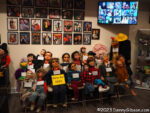 I believe Lisa said this was about half of the Class of 2023. In the past, I have read that the museum gets 10-15 donations per year. I’m guessing that there might not have been a Class of 2022 but I don’t know that. The picture shows one of many ways that the museum is taking advantage of technology. The archives contain enough photos to cover all of the walls many times over. Large monitors like the one shown here support viewing digitized versions of various large collections without using a large amount of physical space.
I believe Lisa said this was about half of the Class of 2023. In the past, I have read that the museum gets 10-15 donations per year. I’m guessing that there might not have been a Class of 2022 but I don’t know that. The picture shows one of many ways that the museum is taking advantage of technology. The archives contain enough photos to cover all of the walls many times over. Large monitors like the one shown here support viewing digitized versions of various large collections without using a large amount of physical space.
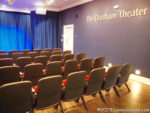 On the other hand, there is enough space in the new building to allow using a pretty good chunk of it in a theater. Lisa seemed to appreciate this bit of luxury as much as the parking spaces and restroom. Less obvious but equally important improvements include high-end HVAC to make the dummies feel good and museum-grade lighting to make them look good. Along with this major upgrade to the physical space there are some changes to the museum’s online presence. Tours can still be scheduled the old-fashioned way via telephone or email but they can also be scheduled directly via the museum’s website. That’s what I did and thought it worked quite well. Information and links for personally checking out the museum’s new digs yourself are here.
On the other hand, there is enough space in the new building to allow using a pretty good chunk of it in a theater. Lisa seemed to appreciate this bit of luxury as much as the parking spaces and restroom. Less obvious but equally important improvements include high-end HVAC to make the dummies feel good and museum-grade lighting to make them look good. Along with this major upgrade to the physical space there are some changes to the museum’s online presence. Tours can still be scheduled the old-fashioned way via telephone or email but they can also be scheduled directly via the museum’s website. That’s what I did and thought it worked quite well. Information and links for personally checking out the museum’s new digs yourself are here.
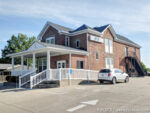
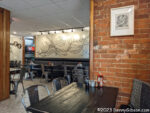 In my report of that 2011 visit, I told of stopping for breakfast a little less than three miles northeast of the museum so it seems appropriate to describe a stop for breakfast before this visit a little more than three miles southwest of the museum. I had tried stopping at The Hive once before but gave up after three passes through the completely filled parking lot. That reinforced all the good things I’d heard about the place and prompted me to get there a little earlier this time. Now I can say good things myself. In 2011, I had a goetta and cheese omelet at the Anchor Grill. Today I had a goetta and cheese and mushroom omelet.
In my report of that 2011 visit, I told of stopping for breakfast a little less than three miles northeast of the museum so it seems appropriate to describe a stop for breakfast before this visit a little more than three miles southwest of the museum. I had tried stopping at The Hive once before but gave up after three passes through the completely filled parking lot. That reinforced all the good things I’d heard about the place and prompted me to get there a little earlier this time. Now I can say good things myself. In 2011, I had a goetta and cheese omelet at the Anchor Grill. Today I had a goetta and cheese and mushroom omelet.
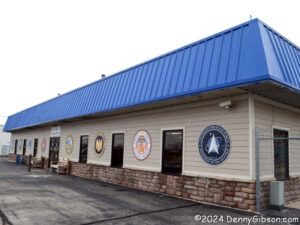 It was during September’s Waco Aircraft Company centennial that I first became aware of the Miami Valley Veterans Museum sitting about a hundred yards south of Historic WACO Field. My friend Terry and I attended the centennial and have talked ever since about visiting the museum. We finally got it done on Thursday. I was surprised to see a dozen or so cars in the lot when I arrived a little ahead of Terry and a little ahead of the museum’s 10:00 opening. I initially thought I might have the opening time wrong but soon realized that the cars that beat me there belonged to volunteers taking care of things inside. This place clearly has a dedicated and energetic crew. During my brief wait, I snapped the picture at right and noted that the building’s signage included the first USSF insignia I had seen in the wild.
It was during September’s Waco Aircraft Company centennial that I first became aware of the Miami Valley Veterans Museum sitting about a hundred yards south of Historic WACO Field. My friend Terry and I attended the centennial and have talked ever since about visiting the museum. We finally got it done on Thursday. I was surprised to see a dozen or so cars in the lot when I arrived a little ahead of Terry and a little ahead of the museum’s 10:00 opening. I initially thought I might have the opening time wrong but soon realized that the cars that beat me there belonged to volunteers taking care of things inside. This place clearly has a dedicated and energetic crew. During my brief wait, I snapped the picture at right and noted that the building’s signage included the first USSF insignia I had seen in the wild.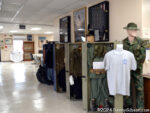 The museum was established in 2009 and spent its early years in the Masonic Building in downtown Troy. It moved here in 2021. One of the first things encountered on entering the museum is the History in a Box series. These are portable displays that are used in presentations at schools and such. Each box represents a different period beginning with pioneer days and currently ending with the Vietnam War. Assembling a box for the Middle East conflicts is in progress.
The museum was established in 2009 and spent its early years in the Masonic Building in downtown Troy. It moved here in 2021. One of the first things encountered on entering the museum is the History in a Box series. These are portable displays that are used in presentations at schools and such. Each box represents a different period beginning with pioneer days and currently ending with the Vietnam War. Assembling a box for the Middle East conflicts is in progress.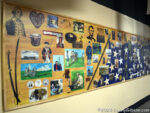
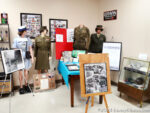 There are several other exhibits in the lobby area but the bulk of the displays are in a huge room behind it. Women are well represented throughout the museum but because March is Women’s History Month some items related to women in the military are displayed just outside the entrance to the main exhibit area. The 42-foot “Veterans Marching Through Time” mural is just inside the entrance.
There are several other exhibits in the lobby area but the bulk of the displays are in a huge room behind it. Women are well represented throughout the museum but because March is Women’s History Month some items related to women in the military are displayed just outside the entrance to the main exhibit area. The 42-foot “Veterans Marching Through Time” mural is just inside the entrance. 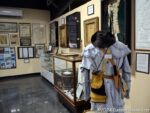
 Exhibits in the big room are arranged chronologically beginning with the pioneer period. Marine uniforms from 1776 and 1863 can be seen in the first picture. The drum visible in both pictures is from the War of 1812.
Exhibits in the big room are arranged chronologically beginning with the pioneer period. Marine uniforms from 1776 and 1863 can be seen in the first picture. The drum visible in both pictures is from the War of 1812.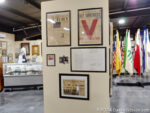
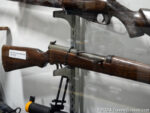 These two photos are of more or less random items that caught my eye. The genuine “bolt action” long gun was handmade by the Viet Cong but doesn’t appear all that crude until you get close. The “ITALY SURRENDERS!” headline stood out because it is a lot more common to see headlines announcing the Japanese or German surrender. That’s quite understandable since those surrenders actually ended campaigns whereas defeating Italy was just a step on the way to victory in Europe.
These two photos are of more or less random items that caught my eye. The genuine “bolt action” long gun was handmade by the Viet Cong but doesn’t appear all that crude until you get close. The “ITALY SURRENDERS!” headline stood out because it is a lot more common to see headlines announcing the Japanese or German surrender. That’s quite understandable since those surrenders actually ended campaigns whereas defeating Italy was just a step on the way to victory in Europe.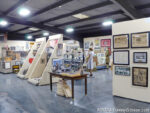 Terry and I had heard good things about the museum but it exceeded our high expectations in both the number and range of artifacts displayed. The friendliness and energy of the volunteers we met were also quite impressive. Open 10:00-2:00 Mondays, Wednesdays, and Thursdays. There is no admission charge but donations are welcomed.
Terry and I had heard good things about the museum but it exceeded our high expectations in both the number and range of artifacts displayed. The friendliness and energy of the volunteers we met were also quite impressive. Open 10:00-2:00 Mondays, Wednesdays, and Thursdays. There is no admission charge but donations are welcomed.
